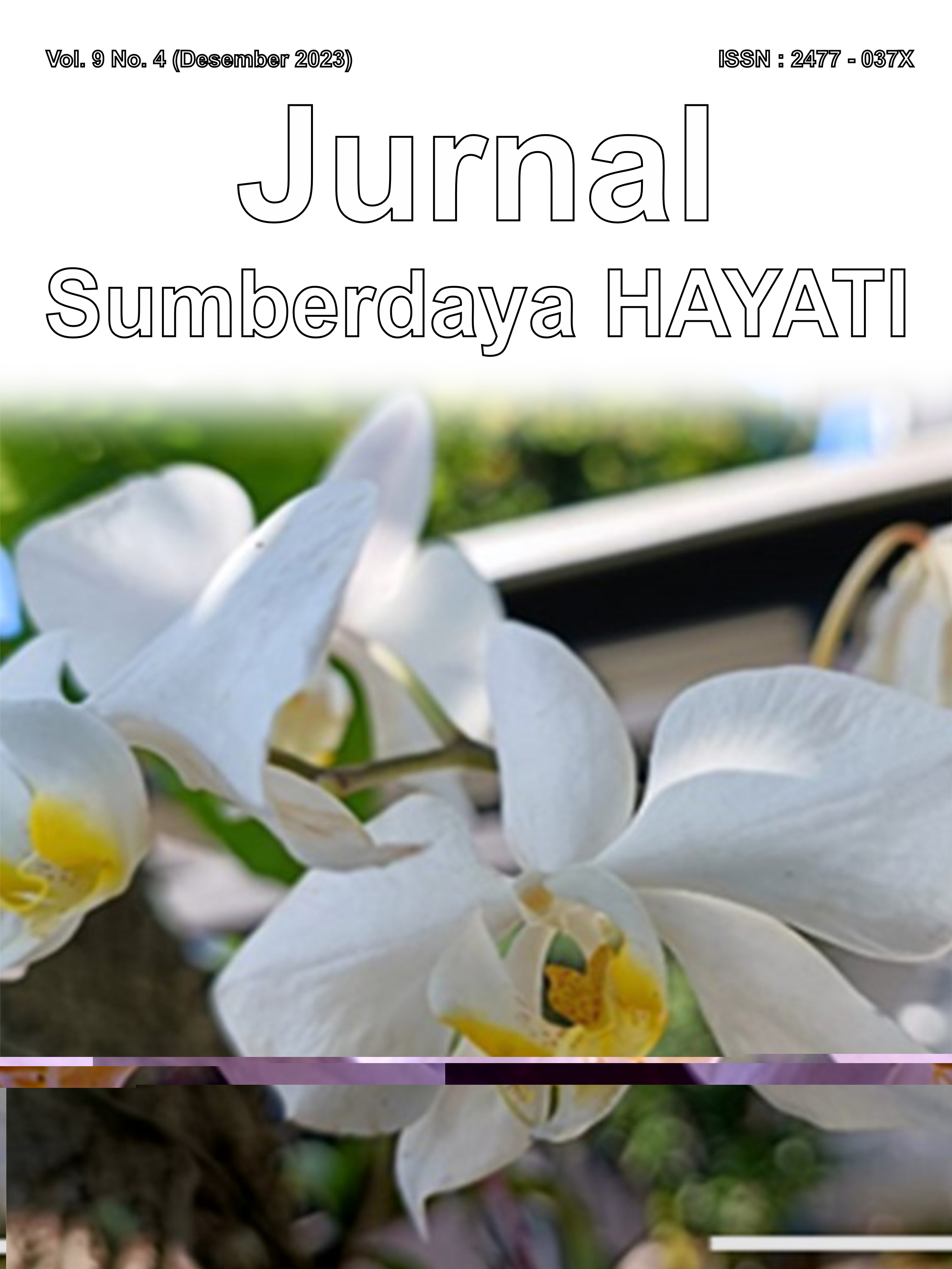Isolasi dan Identifikasi Cendawan Endofit Akar Anggrek Epifit dan Hemiepifit
Isolation and Identification of Endophytic Fungi in Epiphytic and Hemiepiphytic Orchid Root
Abstract
Orchids form a symbiotic relationship with endophytic fungi throughout their life cycle, including their seed germination. Research on orchid endophytic fungi in Indonesia is still limited. This study aimed to isolate and identify endophytic fungi of Phalaenopsis amabilis, Dipodium brevilabium, Vanilla planifolia, and Aerides odorata orchids. Endophytic fungi were isolated from surface-sterilized orchid root pelotons. Fungal identification was based on morphological and molecular characteristics using ITS rDNA sequences, followed by BLAST and phylogenetic tree analysis. All orchids studied had peloton structures in root cortex tissues. From the four orchids studied, 22 fungal isolates were obtained. Five fungal isolates were obtained from the P. amabilis orchid, consisting of 1 Penicillium and 4 sterile mycelium isolates. The D. brevilabium had 7 fungal isolates, namely 1 Penicillium and 6 Fusarium isolates. The V. planifolia had 6 Fusarium isolates, whereas the A. odorata had 4 isolates, such as 1 Penicillium, 2 sterile mycelium, and 1 unidentified isolate. The genus Penicillium was found in 3 out of the 4 orchid species studied. One Penicillium isolate was molecularly identified as Penicillium citrinum. Endophytic fungi in P. amabilis were mostly sterile mycelium, while D. brevilabium, V. planifolia, and A. odorata were dominated by Fusarium.
Downloads
Copyright (c) 2023 Nampiah Sukarno, Michael Michael, Sofi Mursidawati, Edhi Sandra, Nadiya Dwi Rahayu

This work is licensed under a Creative Commons Attribution 4.0 International License.
Authors who submit and publish with this journal agree to the following terms:
1. Authors retain copyright and grant the journal/publisher non exclusive publishing rights with the work simultaneously licensed under a Creative Commons Attribution 4.0 International License.
![]()









_1.png)



